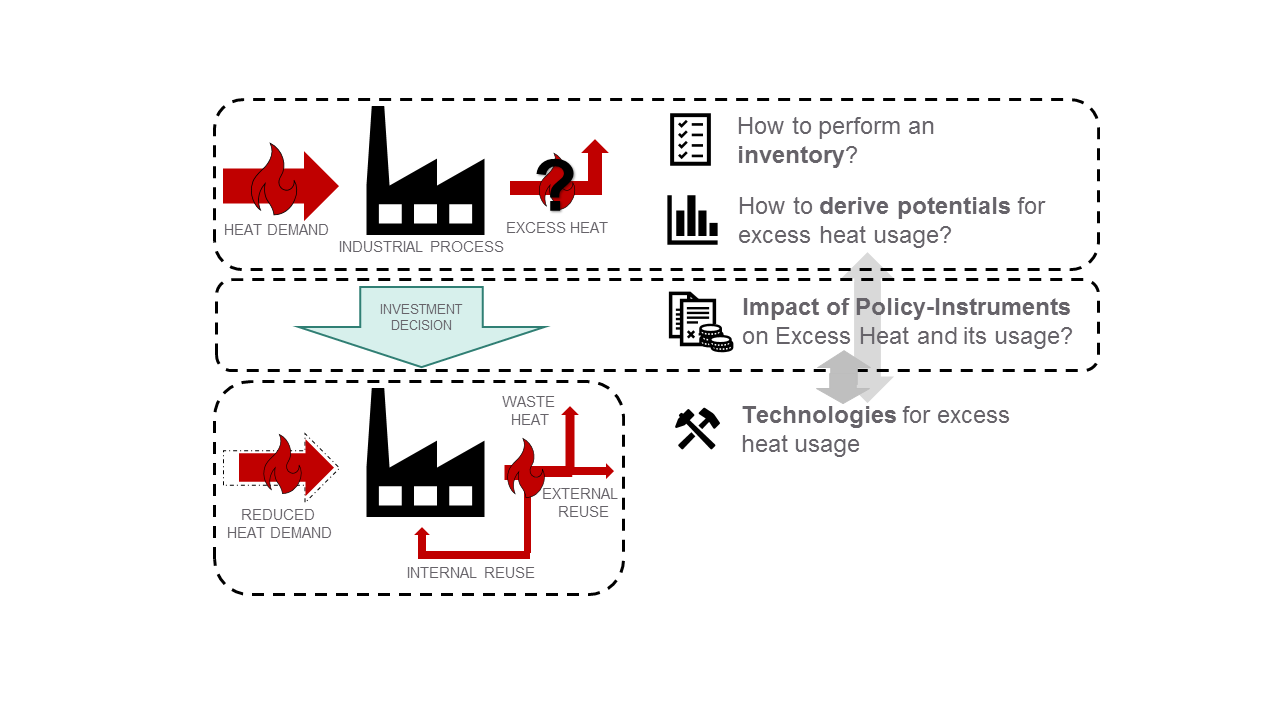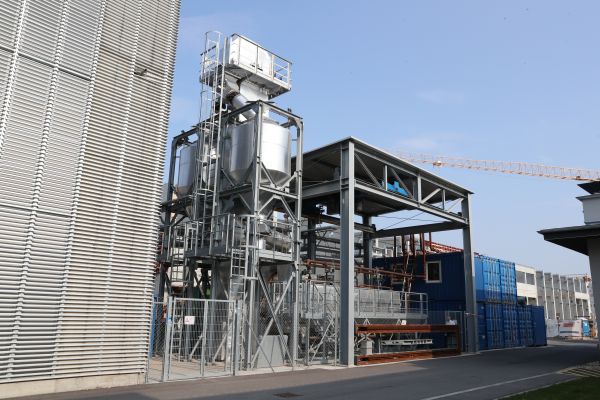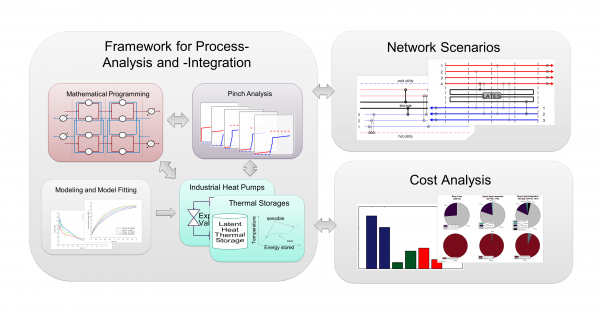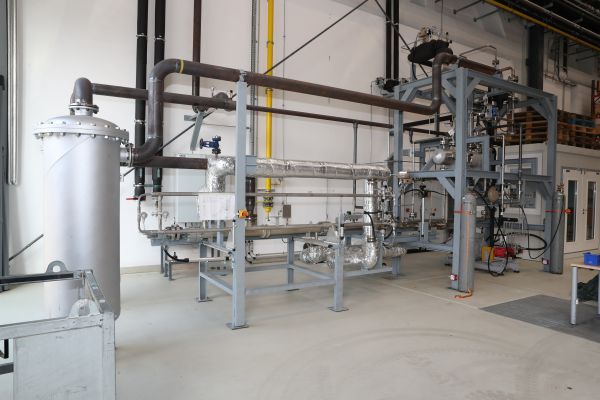IEA-IETS Annex 15: Industrial Excess Heat Recover (Phase 2)
Short Description
Progress in energy-relevant technologies is of great importance for achieving the collective goals of energy security, environmental protection and economic and social developments. Participation in the IEA-IETS enabled Austrian stakeholders to establish international cooperation and to offer R&D services in the field of industrial energy-relevant technologies and systems. In addition, access to valuable know-how was created and increased visibility in the international environment was achieved.
In the national projects submitted, various methods were used to quantify waste heat quantities (questionnaires to companies, methods for process integration of industrial energy systems and use of existing knowledge about real plants or "model" plants to identify excess heat). However, questionnaires appear to be the most relevant and provide more reliable results in industries with low energy system complexity, such as simple heat exchanger networks with some large heat sources. On the other hand, process integration methods are likely to provide more relevant and reliable results in more complex industries with large heat exchanger networks and multiple heat sources. However, process integration methods are more time-consuming and therefore more expensive. Combining model plant knowledge and questionnaires, for example, can be a way to improve the reliability of questionnaire studies in mid-complex industries at lower cost.
As far as policy instruments are concerned, the diversity of policy instruments and their design is enormous. Due to the multitude of parameters and variations, it is more or less impossible to carry out an assessment of all types of more general policy instruments. However, it is clear that policy instruments related to GHG emission costs should in many cases be beneficial for the use of excess heat in situations where the alternatives emit more greenhouse gases. Due to the need for radical decarbonization of society, policy instruments are likely to change gradually in the near future. As the use of excess heat is in most cases very low in greenhouse gas emissions, this area is likely to benefit from such a development.
Some general conclusions from the international Annex project are as follows:
- All participating countries seem to have surplus heat use as one of their priority energy efficiency areas. This finding is based on the many large projects reported by all groups.
- Although the use of excess heat is widespread in all participating countries, there is still great potential for energy savings in this area. Obviously, there is also great economic potential for this. This is evident from the many surveys that have been carried out, in which promising opportunities have been identified.
- However, there are hurdles in the implementation of waste heat projects, which is why many projects are not implemented. These hurdles are among others:
- A lack of proper inventory, i.e. the actual quantities and temperature levels of the excess heat were not determined.
- Uncertainty about integration, control and interaction with other parts of the energy system.
- Different requirements for the profitability of investments between provider and user
- Uneconomic projects with today's policy instruments (but in many cases promising with possible future policy instruments)
- Too high risk due to uncertainties about future framework conditions
The topic of industrial waste heat utilization is central and of essential importance for the transition to a renewable energy system. Industrial waste heat utilization is therefore definitely relevant for the future. In the course of Annex 15 Task 2, however, it has not yet been possible to deal with this topic exhaustively. The continuation of the activities within the framework of Task 3 is therefore currently being prepared at the international level.
Project Images
Terms of use: The pictures listed underneath the header “Project Pictures” originate from the projects in the frame of the programmes City of Tomorrow, Building of Tomorrow and the IEA Research Cooperation. They may be used credited for non-commercial purposes under the Creative Commons License Attribution-NonCommercial (CC BY-NC).
Publications
Publications can be found on the German project site.
Participants
Austria, Denmark, Germany, Norway, Portugal, Sweden, Canada, Italy, France
Contact Address
AIT Austrian Institute of Technology GmbH
Univ. Prof. Dipl.-Ing. Dr. techn. Rene Hofmann (Projektleitung)
Dipl.-Ing. Anton Beck
Giefinggasse 2, 1210 Wien
AEE - Institut für Nachhaltige Technologien
DI Christoph Brunner
DI Jürgen Fluch
Feldgasse 19, 8200 Gleisdorf
TU Wien, Institut für Energietechnik und Thermodynamik
Univ. Prof. Dipl.-Ing. Dr. techn. Markus HAIDER
Getreidemarkt 9, 1060 Wien




